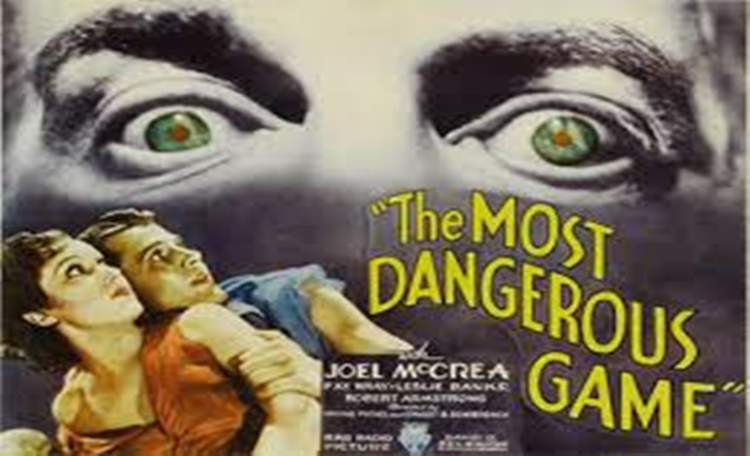“…BUT WOULD YOU CHANGE PLACES WITH THE TIGER?” THE MOST DANGEROUS GAME
THE MOST DANGEROUS GAME
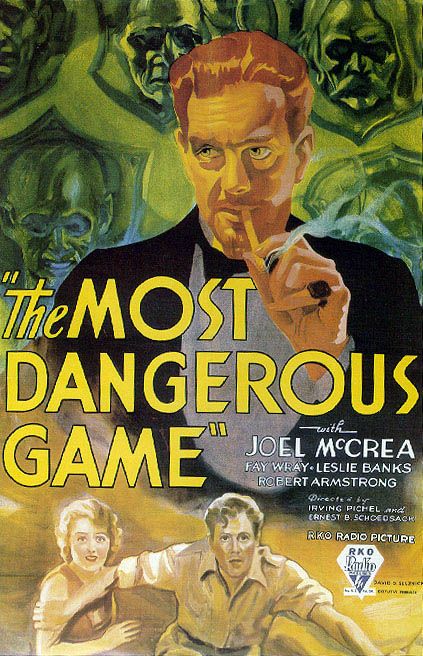
Pros: Leslie Banks is scary; film and script are extremely taut
Cons: A few downright goofy moments: the shark attack – “It got me!”
The first screen adaptation of Richard Connell’s 1924 short story of the same name (which served as the inspiration for almost innumerable works over the years including the very obscure 1959 Bloodlust as well as the infamous Japanese film Battle Royale and the recent Hunger Games novels and movies), 1932’s The Most Dangerous Game deals with a group of shipwreck victims trapped on a remote jungle island with a deranged big-game hunter named Count Zaroff. Zaroff has become increasingly bored with hunting “normal” animals of the jungle and has found a way to “up the ante” in his hunting – by pursuing human prey. Manipulation of local shipping routes (i.e. sending nearby ships careening into the rocks surrounding his isolated retreat) has provided Zaroff with a constant supply of victims to participate in his “hunts,” though he may be in over his head since the newest castaway named Bob Rainsford is a professional hunter himself. After discovering Zaroff’s hidden “trophy room” that’s filled with mounted human heads, Rainsford and a female shipwreck victim named Eve find themselves in the cross hairs of Zaroff’s high-powered rifle as they attempt to survive the Count’s pursuit – will Rainsford himself wind up as a hunter’s trophy?

Fay Wray and Joel McCrea as Eve and Rainsford, up against a madman.
Produced by Merian C. Cooper and Ernest B. Schoedsack one year before the duo struck gold with the classic, original screen version of King Kong, The Most Dangerous Game incorporates many of the same elements. Many scenes here take place in a rather elaborate jungle set – perhaps the same one used in the Kong film since it has similar landmarks including a log bridge, steep dropoffs, and thick vegetation. The outdoor set also includes a fog-shrouded, eerie swamp replete with alligators and lots of mud and a raging waterfall: I’d have to give the art department credit for making all these locations seem genuinely convincing. Perhaps the more impressive set in the film however is the marvelous interior of the Zaroff mansion, which includes a grandiose vestibule that’s adorned with a particularly interesting mural on the wall showing a centaur running off with a fetching young woman. Also noteworthy is the intricate knocker on the mansion’s door which, when it’s first seen in the opening shot, gives an audience some idea of what to expect in the film.
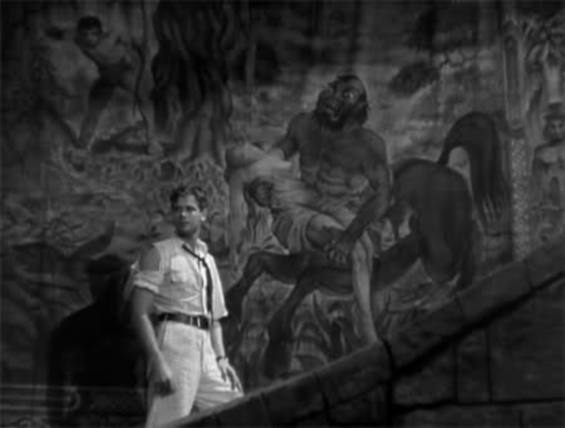
Check out that painting in the background – just one of many magnificent contributions from the art department.
James Ashmore Creelman wrote the script and has done a magnificent job of retaining the ghastly and sinister nature of the original Connell short story while fleshing it out a bit for the screen. Additionally, co-directors Schoedsack and Irving Pichel ensure that this film clips along at a furious pace (it runs just 63 minutes) and has minimal downtime. The basic story is established most efficiently and from there, it becomes a true thrill ride of a picture even if it’s entirely predictable and has a few blatantly goofy moments (the whole opening shipwreck sequence is amusingly awful). The film really starts to build momentum around the time when Rainsford and Eve set off into the jungle and maintains a sense of tension right up until the finale. A few genuinely creepy moments pop up from time to time as well, including one in which the two protagonists stumble into Zaroff’s “trophy room” for the first time. I also liked that the various Cossack servants that Zaroff employs in his estate seem positively diabolical – the types of servants one would find lurking around in any number of Universal’s classic fright films.

“Smile Ivan!” One of the menacing Cossack servants around Zaroff’s estate.
In front of the camera, The Most Dangerous Game features two of the players who would appear alongside King Kong the following year: Fay Wray as the plucky Eve gets a chance to build up her lung capacity in a few extended screaming sessions prior to screeching throughout the whole of the Kong film, and squeaky-voice Robert Armstrong (who plays Carl Denham in Kong) stars as Eve’s brother Martin. Armstrong actually is quite funny to watch in this film: the prototypical drunken buffoon who makes an ass of himself before Zaroff, tired of his shenanigans, invites him into the trophy room…Meanwhile, Joel McCrea as Rainsford is the typical, upstanding adventure film leading man and hero, initiating an obligatory, but mostly unspoken romance with Eve. These cast members generally get the job done in relating their parts, but aren’t anything truly special to watch.
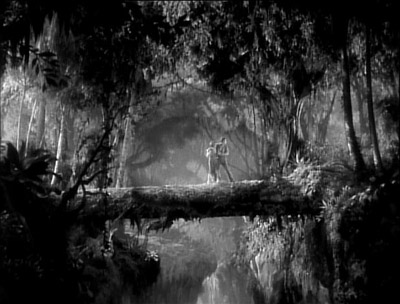
This scene could have been lifted right out of Cooper and Schoedsack’s later King Kong.
By far the most interesting performance in the film is turned in by British actor Leslie Banks as Zaroff. Banks positively embodies evil in the film, barking orders in Russian to his servants, glaring maniacally at his “guests” (and intended victims), and is frequently lit from underneath in a way that makes him resemble the devil himself. Gotta love the scenes where, when contemplating his nefarious plot, Zaroff starts stroking a prominent scar on his face that was acquired “while hunting buffalo,” a brilliantly unnerving character detail that only makes him seem more devious – especially when paired with Banks’ unhinged line delivery and gleefully malicious dialogue. Though I’m not sure I could make a firm argument that this film is an obvious horror picture, Banks’ Zaroff is about as scary a horror movie villain as would have existed in 1932.
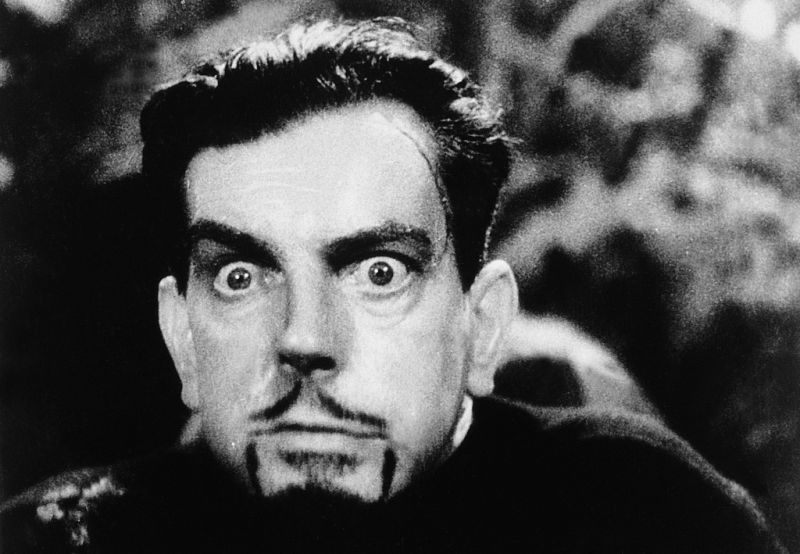
Because that’s not creepy at all.
Max Steiner’s ominous and menacing music establishes a macabre mood early on, and becomes most suspenseful later on in the picture, while Henry W. Girrard’s wonderful black and white photography features some really nice set-ups and individual shots. I especially marveled at the concluding sequence filmed out a window in the Zaroff estate and one in which the camera rushes through the jungle as if representing the view of the victims being hunted. All in all, I could scarcely come up with a more effective or more assured screen adaptation of Connell’s original story: 1932’s The Most Dangerous Game is quite simply concise and captivating, an expertly crafted piece that probably would have been rather alarming and disturbing at the time in which it was made. The story has lost some “oomph” over the years (mostly due to the fact that this concept has been used time and again in a string of high-profile projects), but despite the fact that modern audiences might not be impressed by this film (“it’s in black and white!”), I’d have to call it a near masterpiece – the definitive screen version of a classic tale.
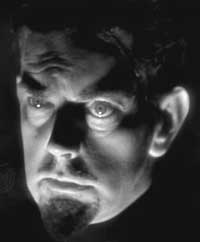
Available in a number of different DVD versions, including a colorized edition as well as a Criterion Collection disc. The film can also be viewed in its entirety .
4/10 : Scenes of severed heads floating in jars, but this film is more distressing for what is implied than for what is shown.
1/10 : Disturbing subject matter, but no profanity
1/10 : Since this was a Pre-Code film, Fay Wray is allowed to run through the jungle in just a nightie – fairly risque for the time, but nothing compared to what would be seen today.
6/10 : A classic short story adapted precisely for the screen; this would likely appeal to those who enjoy the old-time horror classics.
Zaroff gets the best lines, describing his “game” as “outdoor chess – his brains against mine,” and then declaring his superiority to his victims: “Surely you don’t think anyone who has hunted leopards will follow you into that ambush? Oh very well: if you choose to be the leopard, I shall hunt you like the leopard…”
Watch this Classic!

